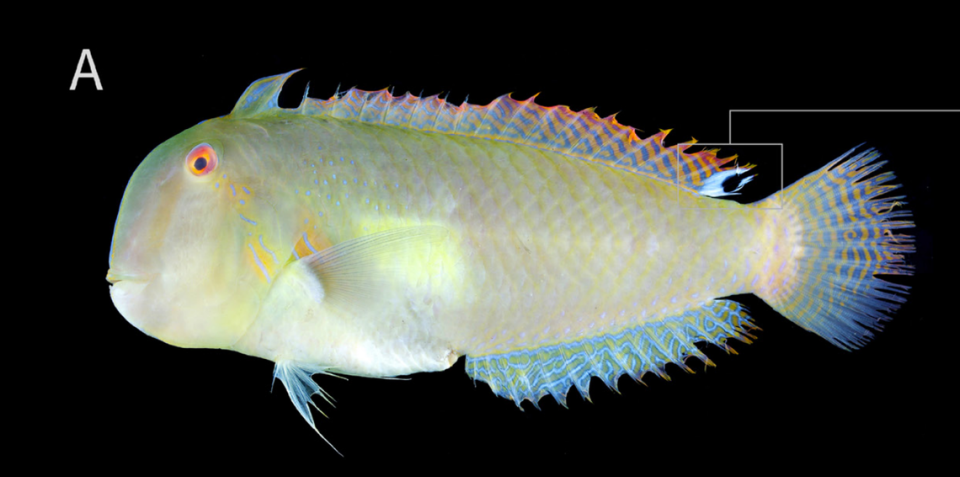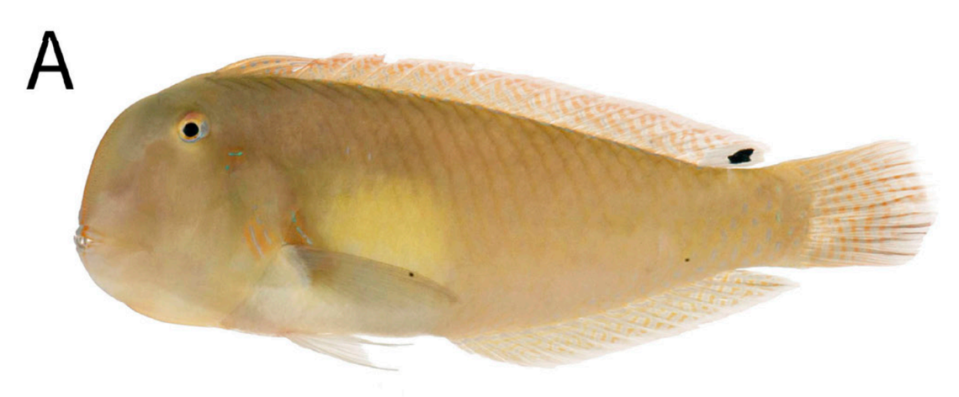Orange-eyed sea creature purchased at local market turns out to be new species. See it
Surrounded by sellers and their wares, an orange-eyed sea creature sat at a local market in the Philippines. It had a brightly colored body, “metallic” spots and a price on its head.
Scientists visiting the market bought the animal — and discovered it was a new species.
Kent Elson Sorgon bought a fish from a public market on Bohol Island in 2018, according to a study published Sept. 4 in the journal Raffles Bulletin of Zoology. He recognized that it was a razor wrasse fish, but it didn’t match any known species.
The fish from the market had a “large” black and white ocellus, or eyespot, at the very end of its dorsal fin, the study said. No other razor wrasse fish had this marking.
Intrigued, researchers started looking for more fish specimen with these “distinctive” features. They bought six more from fish markets on other Filipino islands and found two preserved fish in museum collections in Australia, the study said.
Researchers took a closer look at these fish and realized they had discovered a new species: Iniistius bakunawa, or the eclipse-spot razor wrasse fish.
The eclipse-spot razor wrasse fish have an “extremely” flat body that is “pale yellowish to jade green” in color, researchers said. Their dorsal fin has “metallic” spots of “yellowish green,” blue and orange. The fish is known to reach about 6.8 inches in size.
Photos show the rainbow-colored fish. It has a rectangular, block-shaped head and bright orange eyes. Its body and fins are covered in a ripple-like pattern of white, orange and blue bands. The black and white eyespot is visible on the end of the fish’s top fin.

Because researchers discovered the eclipse-spot razor wrasse fish from local markets and archives, they know nothing about its natural habitat or behavior.
Other species of razor wrasse are known to live in “sandy habitats such as sea-grass meadows or wide sand channels away from coral reefs,” the study said. These habitats, however, are “often overlooked” by divers and during scientific surveys.
Those related fish are also known to “plunge headfirst” into the sand “and bury themselves” by rapidly wiggling “when startled or in the presence of predators,” the study said. Researchers don’t know if the eclipse-spot razor wrasse fish has this escape mechanism.

The new species was found at markets on the Filipino islands of Bohol, Cebu, Jolo and Panay and in archive collections in Western Australia. It likely “occurs elsewhere in the Indo-West Pacific,” the study said.
Researchers named the new species after Bakunawa, “a serpentine or draconic figure in Visayan mythology believed to be responsible for causing an eclipse by devouring the moon.” The name stems from the black and white eyespot on the fish’s fin.
The Visayan people are “any of three ethnolinguistic groups of the Philippines,” according to Britannica.
The new species was identified by its fins and body shape, scale pattern and coloring, the study said. Researchers did not provide a DNA analysis of the new species.
The research team included Kent Elson Sorgon, Yi-Kai Tea, Jasmin Meren and Cleto Nañola Jr.
Mountain creature with rows of extra ‘eyes’ found lurking in rocks. It’s a new species
‘Large,’ veiny sea creature found in Canada is new species. See ‘vase-shaped’ animal
Black-throated sea creature found in ‘acid water’ in Indonesia. It’s a new species

